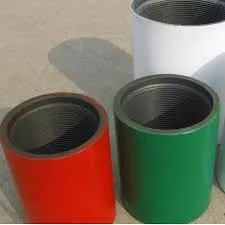- Afrikaans
- Albanian
- Amharic
- Arabic
- Armenian
- Azerbaijani
- Basque
- Belarusian
- Bengali
- Bosnian
- Bulgarian
- Catalan
- Cebuano
- Corsican
- Croatian
- Czech
- Danish
- Dutch
- English
- Esperanto
- Estonian
- Finnish
- French
- Frisian
- Galician
- Georgian
- German
- Greek
- Gujarati
- Haitian Creole
- hausa
- hawaiian
- Hebrew
- Hindi
- Miao
- Hungarian
- Icelandic
- igbo
- Indonesian
- irish
- Italian
- Japanese
- Javanese
- Kannada
- kazakh
- Khmer
- Rwandese
- Korean
- Kurdish
- Kyrgyz
- Lao
- Latin
- Latvian
- Lithuanian
- Luxembourgish
- Macedonian
- Malgashi
- Malay
- Malayalam
- Maltese
- Maori
- Marathi
- Mongolian
- Myanmar
- Nepali
- Norwegian
- Norwegian
- Occitan
- Pashto
- Persian
- Polish
- Portuguese
- Punjabi
- Romanian
- Russian
- Samoan
- Scottish Gaelic
- Serbian
- Sesotho
- Shona
- Sindhi
- Sinhala
- Slovak
- Slovenian
- Somali
- Spanish
- Sundanese
- Swahili
- Swedish
- Tagalog
- Tajik
- Tamil
- Tatar
- Telugu
- Thai
- Turkish
- Turkmen
- Ukrainian
- Urdu
- Uighur
- Uzbek
- Vietnamese
- Welsh
- Bantu
- Yiddish
- Yoruba
- Zulu
Installing a Seating Nipple in Tubing for Optimal Performance and Efficiency
Understanding Seating Nipple in Tubing A Comprehensive Overview
In the field of oil and gas production, the integrity and functionality of tubing are paramount. One critical component often discussed in this aspect is the seating nipple. This article explores the role of seating nipples in tubing, their significance in the overall production process, and best practices for their use.
What is a Seating Nipple?
A seating nipple is a specially designed fitting used within production tubing systems. Its main function is to provide a reliable location for the attachment or seating of various tools, such as packers, plugs, or other downhole equipment. These nipples serve as anchor points, ensuring that downhole tools can be securely positioned at specific depths in the wellbore, which is crucial for effective oil and gas extraction.
The design of a seating nipple typically includes a specific profile that allows tools to be easily seated and held in place during operation. This design is essential, as it prevents slippage and ensures that the equipment can withstand the pressures and forces encountered during drilling and production.
Importance of Seating Nipples
Seating nipples are vital for several reasons. First and foremost, they enhance the overall reliability of the tubing system. A properly seated tool can help maintain well integrity, preventing leaks and ensuring that production remains consistent. Additionally, they facilitate easier maintenance and intervention. When a tool needs to be retrieved or replaced, a seating nipple simplifies the process, saving time and reducing costs associated with workover operations.
Furthermore, different types of seating nipples can accommodate various tools and applications, providing flexibility in downhole operations. For instance, a well may require different types of packers or plugs depending on the geological conditions encountered. By utilizing a variety of seating nipples, operators can optimize their systems for specific production goals.
Applications of Seating Nipples
The applications of seating nipples are varied and wide-ranging. They are commonly used in oil and gas wells for
1. Packer Seating Seating nipples allow for the secure placement of packers. These devices are critical for isolating sections of the well, allowing for more efficient production and enhanced reservoir management.
seating nipple in tubing

2. Plug Seating In situations where a well needs to be temporarily or permanently sealed, seating nipples enable the effective placement of plugs, which can be vital for maintenance or abandonment of wells.
Best Practices for Using Seating Nipples
To maximize the effectiveness of seating nipples, operators should adhere to certain best practices
1. Proper Selection Choose the appropriate seating nipple based on the specific type of tool being used and the requirements of the well environment.
2. Installation Procedures Follow established installation procedures to ensure that the nipple is securely connected and properly aligned with the tubing. This helps prevent issues during the deployment of downhole tools.
3. Regular Inspections Conduct routine inspections of seating nipples to identify potential wear or damage. This proactive approach can prevent significant failures during operations.
4. Training Personnel Ensure that all operational personnel are trained in the functions and importance of seating nipples, so they are aware of proper handling and operational practices.
Conclusion
Seating nipples play a critical role in the functionality of tubing systems in oil and gas production. Their ability to securely anchor various downhole tools ensures optimal well performance and longevity. By understanding their significance and implementing best practices, operators can enhance the safety and efficiency of their production operations, paving the way for more successful hydrocarbon recovery. In an industry where reliability is paramount, the role of every component, including seating nipples, cannot be overstated.
-
Tubing Pup Joints: Essential Components for Oil and Gas OperationsNewsJul.10,2025
-
Pup Joints: Essential Components for Reliable Drilling OperationsNewsJul.10,2025
-
Pipe Couplings: Connecting Your World EfficientlyNewsJul.10,2025
-
Mastering Oilfield Operations with Quality Tubing and CasingNewsJul.10,2025
-
High-Quality Casing Couplings for Every NeedNewsJul.10,2025
-
Boost Your Drilling Efficiency with Premium Crossover Tools & Seating NipplesNewsJul.10,2025







